“In the past, we have asked one thing of our gardens: that they be pretty. Now they [also] have to support life, sequester carbon, feed pollinators and manage water,” said author and biologist Doug Tallamy in his keynote speech at this year’s Plant-O-Rama in Brooklyn, New York. This is a wonderful thing. When our gardens can move us emotionally through blooms and structure and scent, and then also provide a service to the environment, we are gardening in ways that may be even more rewarding. Following are four ways our gardens can go beyond the surface level of beauty.
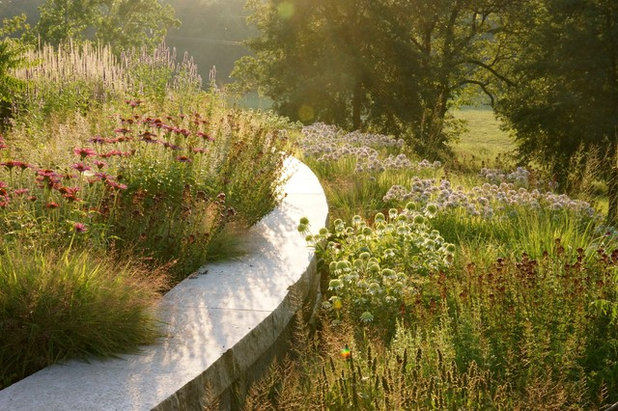
Adam Woodruff + Associates, Garden Artisans
1. “Right plant, right place” means healthier design. Surely beauty is in the eye of the beholder, but what is beauty? Is it the shape and color of a flower? The texture of foliage? The form of a plant? Is it the artful presentation and juxtaposition of plants and hardscapes? Certainly it’s all of the above — but that’s just the top layer.
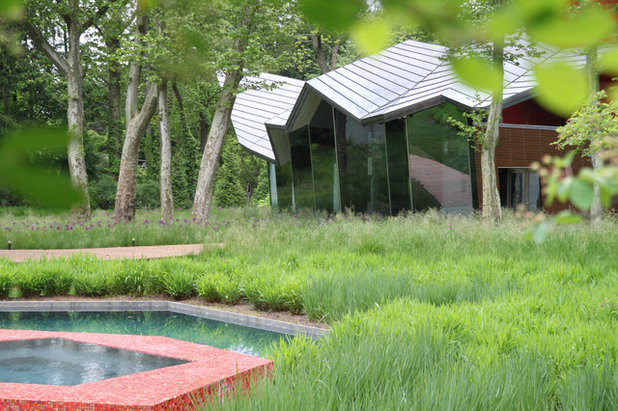
jonathan alderson landscape architects, inc.
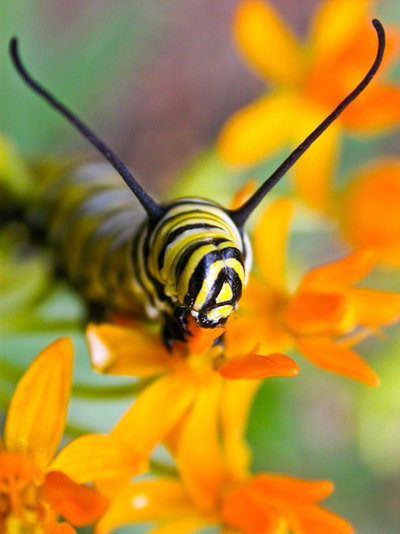
Holm Design & Consulting LLC
Make sure you have the right plant in the right place, preferably native plants that support more life above and below the soil line. But it also matters which plants are next to one another. For example, you might want to place purple prairie clover (
Dalea purpurea, USDA zones 3 to 9; find your zone), a legume, among your beds, as it adds nitrogen to the soil, which will benefit other plants around it. Grasses and sedges (
Carex spp) are also important to place among small shrubs and perennial flowers — they will inhibit weed growth while shading and cooling the soil, keeping more moisture in the ground longer.
A matrix of grasses and sedges — think of them as the base layer of texture in a painting — is important to both beautiful and evocative design year-round, as well as providing habitat for wildlife. You might also consider how bringing a highly attractive nectar plant close to a host plant may increase the butterfly population. I’m thinking meadow blazingstar (
Liatris ligulistylis, zones 3 to 7) next to swamp milkweed (
Asclepias incarnata,
zones 3 to 9) for monarchs. (They love that specific Liatris for nectar, and they lay eggs on milkweed.)
See how to find the right native plants for your yard
Shown: A monarch butterfly larva on butterfly milkweed (
Asclepias tuberosa, zones 3a to 10b)
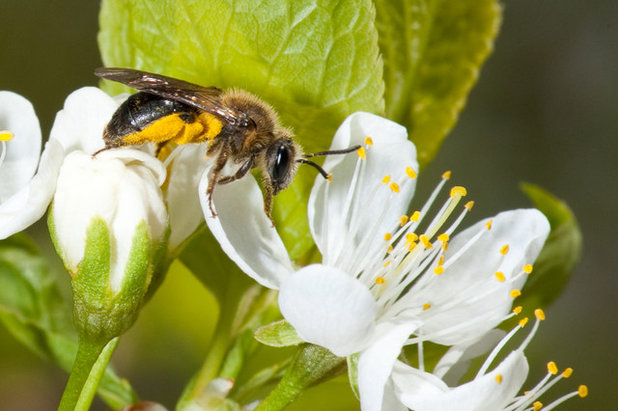
Holm Design & Consulting LLC
2. Gardens host essential insects, worms, spiders and bees. I encourage you to get on your hands and knees for 10 minutes, or 10 hours — you know, whatever works for you and your back. Get up close to see what’s going on among and underneath the flower tops and stems. Trust me, you’ll be amazed at what you’ll find — spiders on the hunt or perfectly camouflaged among petals and leaves, an assassin bug feasting on a fly, aphids pulsing, carpenter bees excavating into a hollow-stemmed Joe Pye Weed (
Eupatorium spp), their buzz echoing up inside the stem, or dung beetles rolling their ball across the soil.
Beauty is far more than a swallowtail landing on golden Alexanders (
Zizia aurea,
zones 3 to 8) or a wash of bluestem (
Schizachyrium scoparium, zones 2a to 9b) folding in a warm breeze like ocean waves. We need the smallest creatures and organisms in our gardens if we want healthy gardens and landscapes.
Shown: A female mining bee on American plum (
Prunus americana,
zones 3 to 8)

jonathan alderson landscape architects, inc.
3. Plants effectively filter water and store carbon. Thickly and diversely planted gardens can be great at cleaning water, preventing runoff that overwhelms storm drains as well as sequestering carbon. I’m a prairie-style gardener — I do live in Nebraska — and it’s surprising for many to hear that a prairie grassland is nearly as efficient at storing carbon belowground as a forest of the same size. I’m not saying our own smaller home gardens will be as good at this job as larger and wilder areas, but fully planted gardens are most certainly better at carbon sequestration than lawn, or garden beds composed mostly of mulch.
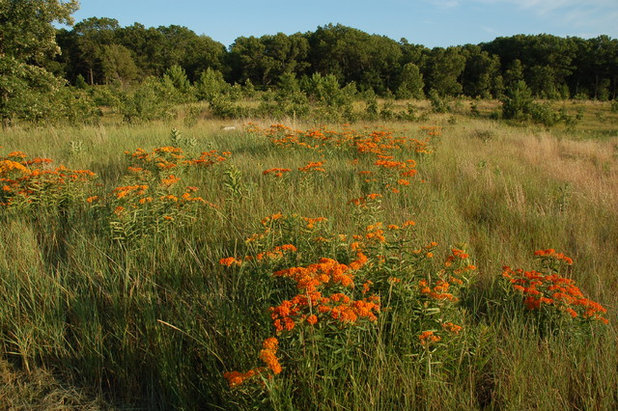
Sparrow Landscaping LLC
The roots of many grasses and perennials can go 3, 6, even 10 feet underground, all the while moving carbon deeper into the soil from the air. Add to this the fact that prairie and meadow plants (many of which are native in wide swaths across most of the country) lose up to one-third of their roots each year, which opens up clay soils and enriches sandy or poor soils as the roots decay. Suddenly rich, healthy soil full of plants storing carbon becomes a beautiful thing to ponder, right?
Learn more about your soil, the simple secret to gardening success
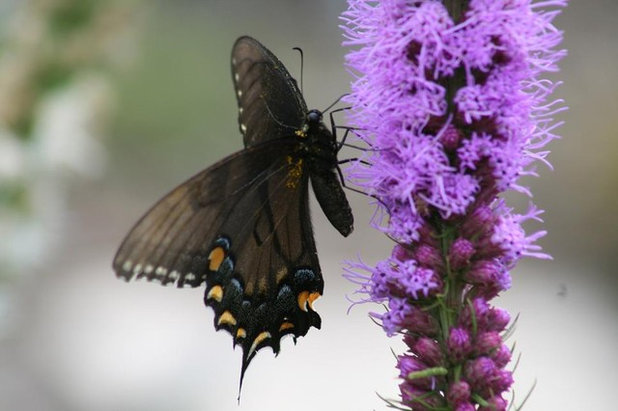
Benjamin Vogt / Monarch Gardens
4. Gardens can create awareness of habitat loss and climate change. It’s estimated that we lose dozens of animal and insect species a day to extinction, and anywhere from 1,000 to 10,000 species a year. The numbers are so varied because we simply don’t know all of the species on the planet, let alone what intricate role they play. It’s also estimated that by 2050, nearly one-third of global plant species may be gone due to land conversion and climate change. We know about monarch butterflies and bees, which are in the news every day, but those are just the most well known.
Everything is linked in a rich web. When we learn about what plants support what organisms, we begin to garden on a deeper level that’s truly empowering and richly satisfying.
Shown: A swallowtail butterfly on prairie blazingstar (
Liatris pycnostachya,
zones 3 to 8)
More:How to Find the Right Native Plants for Your Yard
How to Design a Garden for Native Bees





